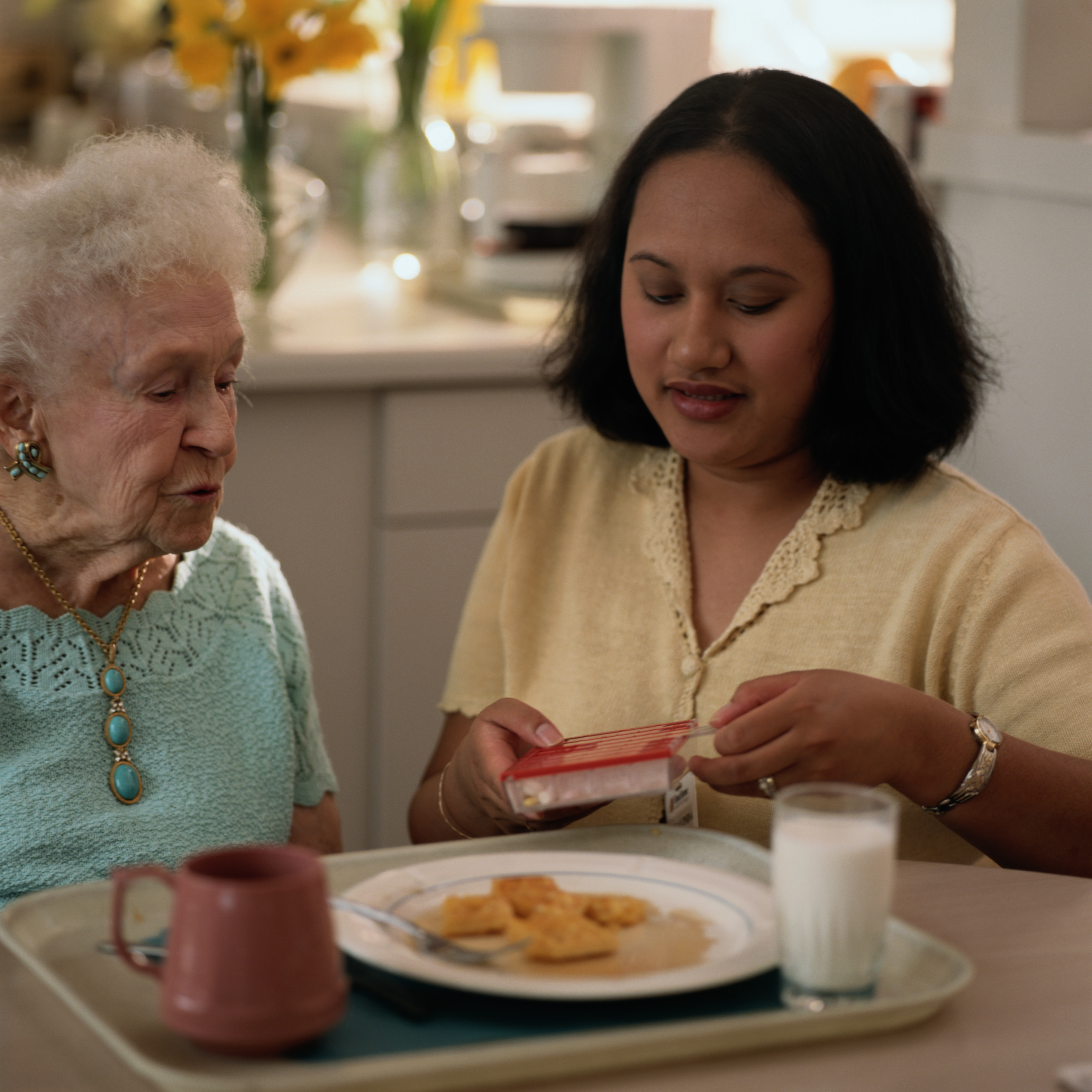It’s not that Dooley, a family physician for more than 15 years, can’t find the office space in the Albany region—rather, his vehicle is what gets him to the homes of the 15–20 patients he sees each week through the Home Visiting Physicians program administered by St. Peter’s Health Partners Medical Associates (SPHPMA) and its affiliate, the Eddy Visiting Nurse Association (EVNA).
The program, funded in part by NYHealth, sends health care providers on medical house calls to visit homebound, chronically ill patients who can’t get to a physician’s office for primary care services. Without regular care, many of these patients end up cycling in and out of emergency rooms or are frequently admitted to hospitals—a costly and inefficient use of the health care system.
In contrast, the Home Visiting Physicians program—serving Albany, Rensselaer, and Saratoga counties—reconnects patients with a primary care provider to receive at-home care and services, which in turn improves their quality of life, reduces unnecessary hospital visits and readmissions, and lowers health care costs.
“This model provides a beautiful bridge for people who can’t get to an office or just don’t know how to use the health care system efficiently and they end up in the emergency room instead,” said Dr. Dooley, who is part of a small team of doctors and nurse practitioners that has treated nearly 300 patients since the program began operating in November 2013. “What we’re doing every day is a huge solution to this problem.”
Participating patients—many of whom are elderly—are homebound and struggle with a host of chronic conditions that keep them from easily accessing outside primary care, including Alzheimer’s or dementia; Parkinson’s disease; multiple strokes; diabetes; respiratory illnesses, such as COPD and pneumonia; spinal injuries; and cardiac issues, such as congestive heart failure.
Dr. Dooley recalled visiting Anne*, a patient with an autoimmune disease who had not been feeling well. Lab work revealed very high blood sugar levels, which would have required Anne’s hospitalization if left unchecked. Instead, Dr. Dooley put together an action plan with Anne’s pharmacist and visiting nurse to give her insulin. Anne stabilized and remained at home, thus avoiding a trip to the hospital.
Another patient, Tara*, had been struggling with a serious lung disease for some time. Prior to being accepted into the Home Visiting Physicians program, she had been to the emergency room six times in six months for her condition. After Tara came under his care, Dr. Dooley discovered through a home visit that she did not have a nebulizer and arranged for one to be brought into the home. In the ensuing seven months, Tara’s hospital trips dropped off dramatically, with no returns at all during that time period. She has since become more emotionally calm in addition to feeling physically better.
The house call team provides a full range of primary care services to homebound patients from the routine, such as checking blood pressure and other vitals and refilling medications, to the more complex, such as administering ultrasounds, EKGs, and X-rays using a mobile imaging unit. The house call team can bring much of the equipment and instruments typically found at a primary care office or hospital directly into the home, according to Dr. Christopher Domarew, one of the program’s physicians.
Through regular home visits and proper primary care, providers can keep health problems from spiraling out of control and prevent unnecessary hospital visits and readmissions—major drivers of health care costs. (The average cost of a U.S. hospital stay in 2010 was $9,700, according to the Agency for Healthcare Research and Quality.) Eight months after its launch, the Home Visiting Physicians program has led to 84 averted emergency room visits and hospitalizations. If a patient does go to the hospital, the house call provider immediately works with the hospital to develop a care plan to get the patient back home as quickly as possible.
“This is serving the need of a population that has fallen to the wayside, but that also utilizes a major part of the health care system,” said Dr. Domarew. “We’ve made a major reduction in hospital readmissions, and if we can avoid even just one admission, that’s a huge impact.”
Home visits also allow the house call team to evaluate the safety of the home or observe any hazardous circumstances that can have a negative effect on patients’ health, such as pest infestations, pets, mold, or unused prescriptions—all issues that would otherwise go unnoticed but can now be rectified, according to Dr. Domarew.
SPHPMA and EVNA are putting in place expansion plans for program and also intend to share the model with other upstate health systems.
“We have so many sick, disabled, disadvantaged people; this has to be the new model of care to deal with this and it’s part of the solution to address the disconnect between primary care providers and the hospitals,” said Dr. Dooley.
*Name changed to protect patient’s privacy
Strong communication and collaboration among the house call team and area hospitals, visiting nurses, physical therapists, and other health care professionals involved with the patients are key to the model’s success. The house call team regularly checks in with their patients’ other health care providers to streamline care and learn more about how a patient is eating, sleeping, and taking medications, and other health indicators. The program also helps to alleviate some of the stress of family members and caregivers struggling to care for loved ones.

